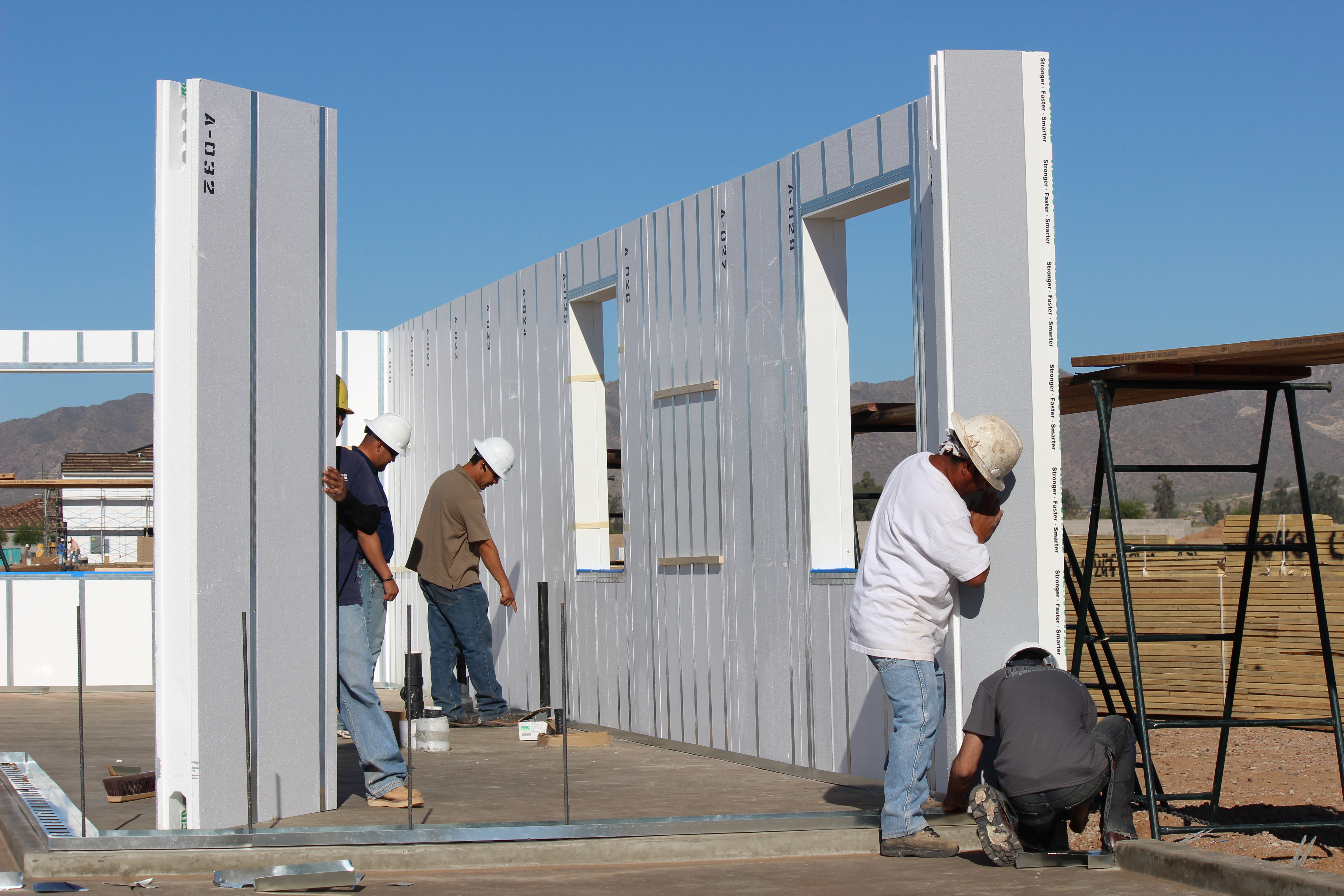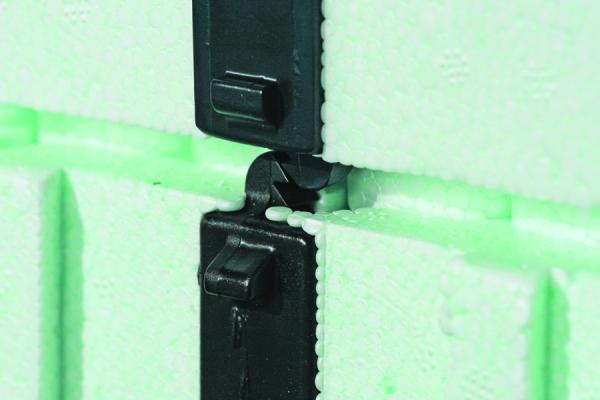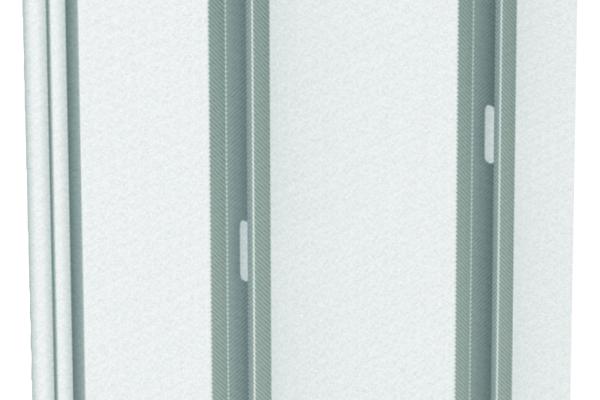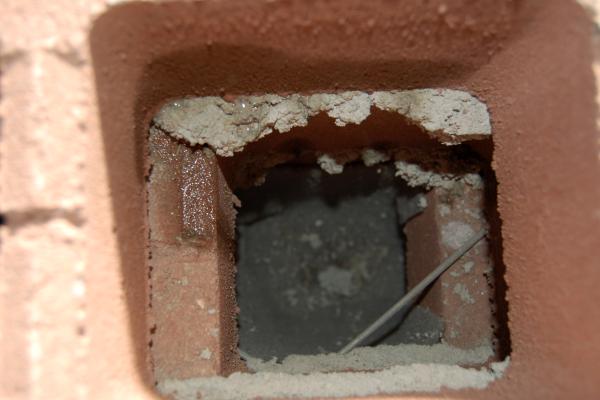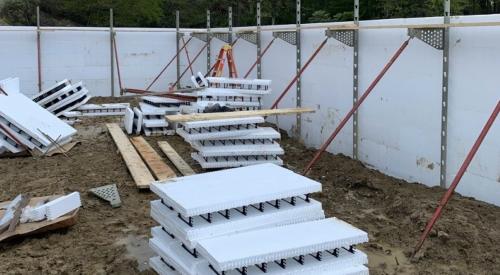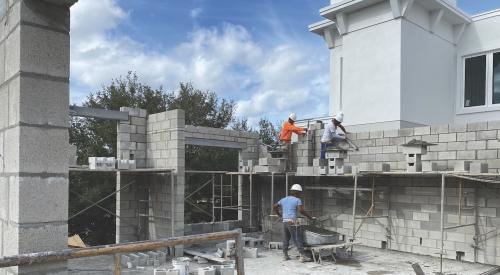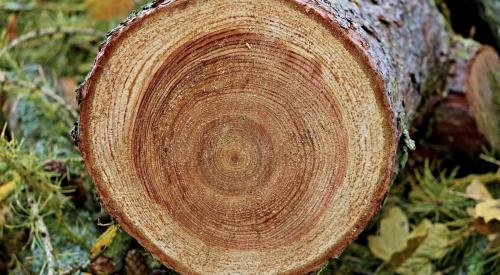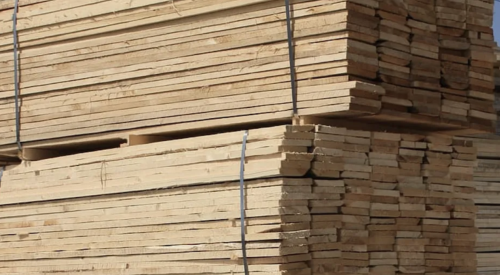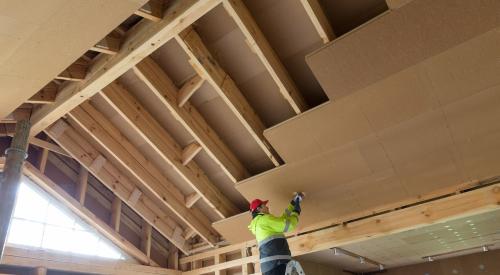Except for concrete block homes in the South and Southwest, concrete structural systems are rarely used in single-family construction, but it is common in multifamily projects.
Concrete systems are durable, strong, and fire-safe, and the possibilities of the systems are extensive.
One hurdle for residential concrete construction is cost. Concrete systems generally require a slight premium over wood, but producers are finding ways to speed installation and, thus, reduce costs, says Jamie Farny, director of building marketing for the Portland Cement Association.
“There are new innovations to make installation of concrete systems easier and faster,” says Farny. “Many ICF products now come with marking points for attachments and with one inch markings, so cutting them to size is a lot easier. Some systems have no directional requirements. You can put them in upside down or right to left.
“Other ICF systems are collapsible, can be shipped flat and are easily handled on site,” Farmy continues. “These have articulated ties that expand in the field. Others have joint connections that serve as attachment points for finishes or for reinforcement.”
According to Farny, the concrete industry is focused on new technologies in two main areas: energy and safety.
“We’re seeing more insulation added to all the different concrete systems,” says Farny. “Manufacturers are incorporating insulation inside, outside or within the block cores, and are working to reduce thermal breaks by taking out some metal connectors or using composite material to create a continuous layer of insulation. The C90 standard for loadbearing concrete masonry now allows manufacturers to use a smaller cross web and thus reduce thermal breaks.”
The industry is also working to incorporate recycled slags and fly ash, or other cementitious material into the concrete mix to replace a portion of the cement and reduce the carbon footprint.
Safety is another issue. With all the recent weather issues—hurricanes and storm surges in coastal areas, high winds and tornados in the central plains, and fires in the southwest and California—the industry has been pushing the durability and non-combustibility aspects of concrete.
“We are heavily promoting the resilience of concrete construction,” notes Farny. “Obviously, we want to protect lives during storms and natural disasters but concrete construction can also protect property. Storm studies have shown concrete structures that may have been damaged but are still standing and can be quickly brought back.”
Today there are new concrete block designs that improve water drainage, designs that facilitate inclusion of reinforcement, and products that boast major sustainability properties. Other innovations include CMU units from Oneonta Block Company with Lox All Truss-Mesh and Lox All Ladder-Mesh technology that provides continuous reinforcement; and masonry blocks by Watershed Materials that utilize geo-polymers in the mix to produce a 50 percent reduction in cement and a 65 percent reduction in embodied energy.
Steel framing is another option available to residential builders. Offering uniform and standardized dimensions, dimensional stability, consistent quality, durability, structural integrity, and a high strength-to-weight ratio, steel permits long spans and more open floor plans. Steel framing studs are also used in many of the concrete panelized systems discussed above.
Structural steel framing also is experiencing some challenges in the single-family construction market.
But the use of steel framing in the residential market has been hampered by the historically slow acceptance of non-traditional framing materials and the continued shortage of residential steel framers.
To overcome these construction limitations, the steel industry has begun to adopt panelization as a way to speed installation. Systems include pre-assembled truss components and light gauge wall panels that include insulation, sheathing, and possibly exterior finish.
Some cold-formed steel producers now use the Direct Strength Method of fabrication to strengthen sections with more stiffening elements. The StudRite system from Marino\WARE offers high strength-to-mass ratios. The product features a lightweight C-Stud design with lip-reinforced repetitive triangular cutouts and embossments. Open-web design allows for easy electrical and HVAC installation and reduces thermal conduction.
Though concrete and steel products offer many benefits to builders and architects, their wide acceptance will continue to see challenges until the industry starts to think outside the box and embrace non-traditional systems.
